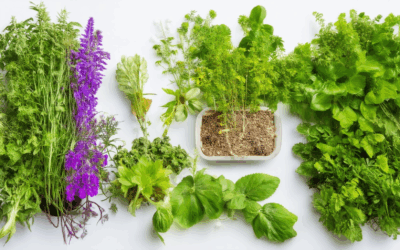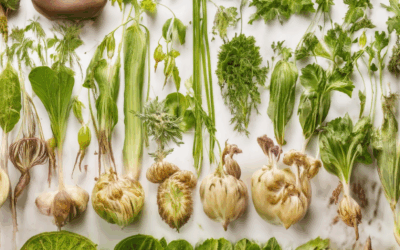In today’s increasingly eco-conscious world, more people are looking to create sustainable spaces that reflect their commitment to the environment. Whether you’re a seasoned gardener or new to the craft, DIY eco-gardening offers a rewarding way to transform your outdoor area into a thriving, eco-friendly haven. By embracing natural methods and repurposing everyday items, you can cultivate a garden that’s not only beautiful but also sustainable for years to come. This guide explores practical tips, creative projects, and sustainable practices that make eco-gardening accessible and enjoyable for everyone, helping you create a garden that harmonizes with nature and supports biodiversity.
The Gardening 3-Year Rule Explained
The gardening 3-year rule is a helpful guideline for understanding the growth patterns of plants over time, particularly focusing on perennials. Here’s a breakdown of how it works:
- First Year: During this period, your plants are establishing their roots and growing steadily. It’s important to allow them to settle in without disturbance. Avoid excessive harvesting or moving them, as their focus is on becoming firmly rooted and developing strength.
- Second Year: In the second year, many plants begin to creep or spread. This is a good time to observe their growth and consider dividing them or moving them to new locations. They are now more resilient to minor changes and can adapt well to their new environments.
- Third Year: By the third year, your plants are considered mature and ready to leap into various settings. This is the optimal time to transplant them, knowing they will thrive regardless of their new location due to their established root systems and growth patterns.
This rule emphasizes the importance of understanding and respecting the natural growth cycles of plants. By following it, you can enhance your gardening efficiency, promote sustainability, and enjoy healthier, more robust plants in your garden.
How Can I Make My Garden Environmentally Friendly?
To make your garden more environmentally friendly, consider implementing the following sustainable practices:
- Composting : Start by collecting kitchen scraps and yard waste to create compost. Use a compost bin or pile to transform these materials into nutrient-rich soil amendments.
- Water Conservation : Install drip irrigation systems to reduce water usage. Collect rainwater using a rain barrel to supplement your watering needs, ensuring compliance with local regulations.
- Companion Planting : Utilize companion planting charts to pair plants that enhance each other’s growth and deter pests. For example, marigolds can repel pests, while carrots and tomatoes grow well together.
- Mulching : Apply mulch made from wood chips or leaves to retain moisture, suppress weeds, and regulate soil temperature. Aim for a thickness of 2-3 inches for optimal results.
- Natural Pest Control : Introduce beneficial insects like ladybugs or attract birds to eat pests. Plant deterrent herbs such as marigolds to keep pests away.
- Organic Fertilization : Use organic fertilizers like compost or fish emulsion to nourish your plants without harming the environment. These can be found at local nurseries or online stores.
- Reduce Plastic Waste : Reuse old containers for planting seeds or small plants to minimize plastic use.
- Minimize Lawn Chemicals : Opt for natural herbicides like vinegar or dish soap for weed control, testing on small areas first to assess effectiveness.
- Plant Native Species : Choose plants suited to your region’s climate to support local wildlife and reduce water needs. Visit a local nursery for recommendations.
- Join Community Groups : Participate in local gardening groups or community gardens to gain knowledge and share resources with eco-conscious gardeners.
By adopting these practices, you can create a more sustainable and eco-friendly garden space.
What is the Rule of 3 in Gardening?
The Rule of 3 in gardening is a simple yet effective design principle that involves grouping plants or features in sets of three to create visual balance and harmony. This technique is often used to enhance the aesthetic appeal of gardens, ensuring that designs look cohesive and well-organized.
Here’s a breakdown of how the Rule of 3 works in practice:
- Aesthetic Principle: The Rule of 3 relies on the human eye’s tendency to find symmetry and repetition appealing. By arranging plants or elements in groups of three, you create a sense of order and rhythm.
- Plant Grouping: One common application is to group three identical plants together in the same container or bed. This works particularly well with perennials, shrubs, or annuals that share similar growth habits.
- Visual Repetition: Repeating patterns of three can extend beyond plants. For example, you might see three pots arranged along a path, three trees planted in a row, or three garden ornaments placed symmetrically.
- Scalability: The Rule of 3 is versatile and can be applied to various aspects of gardening, from small containers to large landscapes. Whether you’re designing a flowerbed or a patio area, the principle helps create a polished look.
The Rule of 3 is particularly useful for achieving a balanced garden composition. By incorporating this principle, you can transform your outdoor space into a visually stunning environment that feels both natural and meticulously planned.
For more gardening tips and design inspiration, visit our resource library at Old Seed.
How to Create an Ecogarden
To create an ecogarden, follow these steps to design and maintain a sustainable outdoor space that benefits both the environment and your household:
- Choose the Right Location
- Select a spot with adequate sunlight, preferably 6 hours a day, for most plants.
- Ensure access to water sources or proximity to a hose for watering.
- Plan Your Layout
- Maximize space by mixing vegetables, herbs, and flowers to create a diverse ecosystem.
- Consider vertical gardening options for space-saving solutions.
- Select Plants Wisely
- Choose native plants suited to your region’s climate and soil conditions.
- Plant species that attract pollinators like bees and butterflies, which are essential for ecosystem health.
- Incorporate edible plants to maximize your garden’s utility and enjoyment.
- Implement Composting
- Set up a compost pile or bin to recycle kitchen scraps and yard waste into nutrient-rich soil.
- Use compost to enrich your soil, reducing the need for chemical fertilizers.
- Conserve Water
- Install rainwater harvesting systems or collect graywater for irrigation.
- Use drip irrigation or soaker hoses to minimize water waste.
- Create Wildlife Habitats
- Add birdhouses or nesting boxes to support bird populations.
- Plant shrubs and trees that provide shelter and food for small animals.
- Install a butterfly garden with nectar-rich plants.
- Pest Control
- Encourage natural predators like ladybugs and birds by creating a balanced ecosystem.
- Use organic pesticides or predator nets as a last resort.
- Energy Efficiency
- Use solar-powered garden tools and lighting to reduce energy consumption.
- Install a solar-powered fountain or pond to aerate the water and attract wildlife.
By following these steps, you can create a thriving ecogarden that promotes biodiversity, reduces environmental impact, and provides long-term benefits for your family and the planet. For more detailed guidance, visit our Organic Gardening Guides to learn about sustainable practices and heirloom gardening techniques.
Creating a Garden Ecosystem
A garden ecosystem is a self-sustaining environment that mimics natural processes to support plants, animals, and microorganisms. Here’s how to create one:
- Build Healthy Soil – Start by enriching your soil with organic matter like compost from kitchen scraps or yard waste. This promotes microbial activity and creates a fertile base for your garden.
- Choose Native Plants – Select plants native to your region as they thrive in local conditions and support biodiversity. Consider species like milkweed for pollinators or coneflowers for birds.
- Implement Water Management – Install rainwater harvesting systems like rain barrels to conserve water. Use mulch to retain soil moisture and reduce irrigation needs. Create water features such as ponds or birdbaths to support wildlife.
- Pollinator Habitats – Design areas with flowers that attract butterflies and bees. Provide nesting boxes for birds and squirrel caches with nuts and fruits.
- Maintain Soil Health – Practice crop rotation, companion planting, and grow cover crops to protect soil during off-seasons. This enhances soil fertility and prevents erosion.
- Waste Management – Implement composting toilets or worm farms to manage human waste responsibly. Convert waste into a resource for your garden.
- Permaculture Design – Arrange your garden in layers: trees, shrubs, vegetables, herbs, and ground cover. This approach maximizes space and productivity while mimicking natural ecosystems.
- Monitor and Adjust – Regularly observe your garden to monitor plant health, water levels, and animal activity. Make adjustments as needed to maintain balance and sustainability.
By integrating these elements, you’ll create a thriving garden ecosystem that supports biodiversity and operates sustainably. Explore more tips and resources on Old Seed to enhance your gardening efforts.
What is a permaculture vegetable garden?
A permaculture vegetable garden is a sustainable gardening method that focuses on creating self-sustaining ecosystems. It emphasizes harmony with nature, using techniques that mimic natural processes to maximize productivity while minimizing environmental impact. Here’s a breakdown of the key aspects:
- Design Based on Local Conditions :
Permaculture gardens are tailored to the specific climate, soil, and microclimate of the area they’re in. This ensures efficiency and adaptability, making the system resilient to changes like drought or pests. - Layered Planting :
The garden is organized in layers—trees, shrubs, herbs, vegetables, and ground cover—to create a balanced ecosystem. Each layer serves a purpose, such as providing shade, erosion control, or food. - Composting and Recycling :
Organic waste is recycled back into the system through composting, enriching the soil and reducing the need for external fertilizers. - Polycultures :
Instead of monocropping, permaculture uses mixed species (polycultures) to create biodiversity. This reduces the risk of pests and diseases while increasing yield stability. - Water Conservation :
Techniques like swales, drip irrigation, and rainwater harvesting are employed to conserve water and make the most of local rainfall patterns. - Integrated Pest Management :
Natural predators and beneficial insects are encouraged to control pests, reducing reliance on synthetic chemicals. - Long-Term Planning :
Permaculture gardens are designed to last generations, focusing on long-term sustainability rather than short-term gains. - Community and Education :
Many permaculture projects involve community efforts, sharing knowledge, and teaching others how to establish their own systems.
By adopting these principles, permaculture gardens not only provide fresh, organic produce but also contribute positively to the environment and local ecosystems.








0 Comments